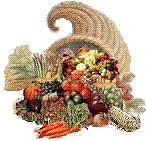Red Kale with Grated Coconut
Ingredients :
Kale: One bunch, preferably red, chopped fine.
Green onion or shallots : one,chopped fine.
Garlic: one or two cloves, chopped fine or garlic paste, half a teaspoon
fresh ginger: half an inch cube - chopped fine
Green chillies: 1 to 4 chopped.
Coconut, dried, shredded: 3 tablespoons.
Onion: Half - chopped fine.
oil: 2 to 3 teaspoons.
salt: one teaspoon
Mustard seeds: One teaspoon.
Turmeric powder: Quarter teaspoon
Cumin seeds: a big pinch
Procedure:
Heat oil over medium heat in a shallow frying pan, preferably Non-stick.
Put mustard seeds and then green onion. When green onion starts turning brown, put the onions, ginger, garlic, salt, cumin seeds, coconut, and turmeric powder. Stir until the onion wilts just a little.
Stir in the kale, mix it well and reduce heat slightly. Keep the pan uncovered. Stir it occassionally till it is fully dry.
Notes:
Those who do not like coconut can omit it.
Indian cooks would grind together the onions, garlic, ginger, coconut, cumin seeds, and turmeric before adding it to the pan.
I also like collards, mild and tender dark green relatives of cabbage. With the vogue for Southern regional foods, they have become widely distributed as a frozen vegetable. This "non-heading cabbage" is the most ancient of cultivated vegetables, and flourishes in gardens where its descendent, regular cabbage, won't make good heads.
Then there are radishes. Hundreds of types and varieties from the enormous daikon to the tiny French salad radishes eaten with a dab of sweet butter. Though they seem different from the greens, they provide the same healthy compounds.
Growing crucifers
Prone to certain bugs and several different root/soil infections, these nutritious crops are demanding if grown in large amounts. I often grow them in pots and small raised beds to give me better control over their care.
Despite being easier to grow than regular cabbage and more heat tolerant than spinach, why are these greens as popular? The answer may be their variable taste. Both of these green vegetables can develop a strong flavor and can be quite bitter, especially in hot weather. The bitter compounds are a survival mechanism triggered by drying out and by excessive heat.
Folks who enjoy these greens will tell you that summer collards are thicker, a little chewier, and more vegetable tasting, while the fall/winter greens are smaller, more tender, and sweeter.
Sowing:
Soil & Culture: Kale and collards will flourish in both sandy/loam or clay/loam soils, well nourished with high quality compost. Dolomite lime will help neutralize acidic soil and loosen clay soil. In northern climates, for spring, start in the greenhouse in March. For fall or winter, try sowing the seed two or three months before your area's average first frost date. Sow 1 seed per inch in rows 15 in. apart. Thin to 18 in. apart by harvesting young plants.
Decorative or flowering kale can be eaten, but is not nearly as tasty or tender as salad kale. Kale packets usually contain 1 gm. of seed, approximately 300 seeds, enough for about 25 row feet.
Scotch types are B. oleracea acephala, while Red Russian varieties fall under B.napus pabularia. Since plants within a species will usually readily cross, this means Scotch kales can cross with plants like broccoli, cauliflower, and cabbage (any Brassica oleracea, in other words), while Red Russian kale only needs to be isolated from rutabagas. Of course this doesn't really matter to you unless you are planning on saving seed from these plants!
Kale seeds are vigorous sprouters, and rival radishes in the speed at which they spring from the ground. Ample nitrogen should be provided early in the plant's life to promote rapid large growth. But, to encourage maximum cold hardiness, nitrogen should not be provided in the later stages of growth. Mix ¼ cup of cottonseed meal into the soil around the spot where you plant the eds – that seems to be plenty of nitrogen for these robust plants' lifetime. All salad kales are large plants, and should be given a minimum of 18 inches in each direction to reach their mature size.
Harvest: Throughout summer, keep lower leaves well picked and remove all yellowing leaves to encourage ongoing production. As cold weather comes on, kale will become sweeter. With mulching, it will over-winter in many areas, even under snow.
Many areas can grow a spring and a fall crop. All members of the cabbage family can withstand frosts and freezes, so plan to place your seeds or seedlings in your garden as one of the first crops. If you time your crops right, you will have only a couple of weeks in the middle of summers' heat and humidity when you are not growing Collards or Kale. This is actually good, as these plants become bitter with high heat and dry conditions.
Choose Healthy foods
Want better digestion, healthier skin, and cancer prevention? Eat your vegetables! Studies suggest that crucifers are particularly effective against colon cancer but also protect against cancers of the skin, breast, stomach, bladder, liver and lung. Phytochemicals in these vegetables stimulate the production of enzymes that appear to neutralize cancer-causing chemicals in the body before they cause harm.
Tired of broccoli? All vegetables listed below are in the cruciferae (or brassicaceae) family.
Widely Available
* Arugula
* Bok Choy and baby bok choy
* Broccoli
* Broccoli rabe (greens)
* Cabbage (green, red, Savoy, Chinese)
* Cauliflower
* Collard Greens
* Kale (curly, lacinato; blue green or tender Russian red)
* Mizuna (Japanese mustard greens-mild)
* Mustard Greens
* Radishes
* Rapini (small turnips grown for their greens)
* Rutabagas
* Turnips (root and greens)
* Watercress
Seasonal
Brussels Sprouts
Horseradish

